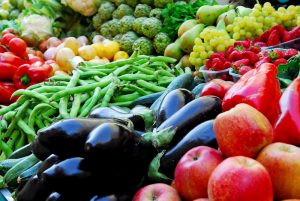
Today’s kids are growing up with a new normal of pesticide-laden food and increased food allergies.
Pesticides can cause harmful effects over an extended period, usually following continuous exposure at low levels. Low doses don’t always have an immediate impact, but over time, they can cause serious health issues.
In fact, long time pesticide exposure has absolutely been linked to dozens of health problems, including certain cancers, asthma, depression and anxiety, symptoms of ADHD, autism, Parkinson’s, Alzheimer’s and a multitude of other issues.
Did you know that pesticides can possibly weaken food tolerance in some people, causing food allergy?
The Evidence in Studies Revealed
According to a study published in the scientific journal of the American College of Allergy, Asthma and Immunology, pesticides and tap water could be partially to blame for food allergies. The study reported that dichlorophenols (DCPs), a chemical used in common pesticides and to chlorinate water, when found in the human body, are associated with food allergies.
DCPs also turn up in moth balls, air fresheners, deodorizer cakes in urinals, and certain herbicides sprayed on crops, “They’re quite common,” says researcher Elina Jerschow, MD, an allergist at Montefiore Medical Center in the Bronx, NY.
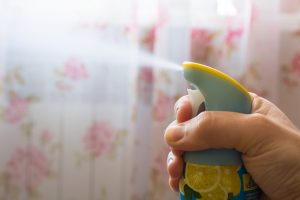
Dr. Jerschow goes on to say, “Our research shows that high levels of DCP containing pesticides can possibly weaken food tolerance in some people, causing food allergy.”
In another study, data was collected by the National Health and Nutrition Examination Survey (NHANES). Of the 2,211 people included in the study, most had detectable levels of DCPs in their urine. About 400 showed sensitivity to at least one food, like peanuts, eggs, or milk. People with the highest levels of the chemicals were nearly twice as likely to show sensitivity to at least one food compared to those with lowest levels of those chemicals.
This study doesn’t prove that DCPs cause food allergies. It merely shows the two are related in some way.
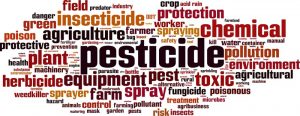
FACTS
- The greatest risk to our environment and our heath comes from chemical pesticides. Despite the dangers, the government maintains its approval of the use of toxic chemicals to make pesticides. Science is constantly developing new variations of poisons.
- Data from the Department of Agriculture shows that the average American is exposed to 10 or more pesticides every day, through diet and drinking water.
- “Pesticide drift” is a term used to describe the reality by which almost all pesticides wind up on something other than their intended target. This means to be effective, more pesticides must be used than would be needed if targeting were more accurate.
- When farmers began to rely on chemical pesticides, a drastic change in human health and soil followed. Chemical pesticides not only deplete the nutritional value of our food, but they also contaminate it.
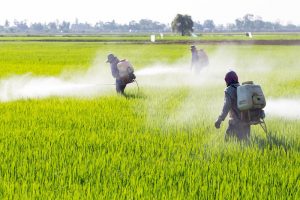
- The danger spreads across large areas, as the pesticides are carried by the wind. They leave residues on produce. Pesticides remain inside produce and animals. They run off into open water, contaminating public water supplies as well as fish and other seafood.
- Charles Benbrook, in his excellent 2008 report “Simplifying the Pesticide Risk Equation: The Organic Option” estimates that organic food production would reduce our overall exposure to pesticides by 97 percent; that is, all but eliminate it.
Is There a Solution?
The long-term solution is to reduce pesticide use. There is so much that is beyond our control. However, there is a strategy to help protect ourselves and our families now.
Organic “IS” Better
We’re all on a budget and buying all organic can be costly. But, buy organic when you can. Above all, try to buy organic fruits and vegetables classified as the Dirty Dozen™.
Whether purchasing conventional or organic, buy local fruits and vegetables.
The Dirty Dozen™ and the Clean 15™
Every year, the Environmental Working Group (EWG) publishes its Dirty Dozen™ list, naming the fruits and vegetables that rank highest in pesticide residue. They also give a shout out to the cleanest fruits and vegetables, the Clean 15™.
The USDA rotates what food it tests for pesticides with a special focus on produce that kids consume.
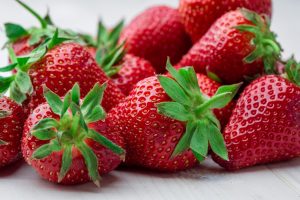
The Environmental Working Group’s 2017 Dirty Dozen™ + and Clean 15™
Dirty Dozen +™
- Strawberries
- Spinach
- Nectarines
- Apples
- Peaches
- Pears
- Cherries
- Grapes
- Celery
- Tomatoes
- Sweet Bell Peppers
- Potatoes
- + Hot Peppers
Clean 15™
- Sweet Corn
- Avocados
- Pineapples
- Cabbage
- Onions
- Sweet Peas, frozen
- Papayas
- Asparagus
- Mangos
- Eggplant
- Honeydew Melon
- Kiwi
- Cantaloupe
- Cauliflower
- Grapefruit
Source: https://www.ewg.org/foodnews/dirty_dozen_list.php
Let’s take a closer look at the dirty dozen™ and what landed them a spot on the list.
- Strawberries: Strawberries remain #1. This red, juicy fruit has a soft, seedy skin, allowing easier absorption of pesticides. Research showed that various strawberries sampled contained 53 pesticides. A single sample of strawberries contained 20 pesticides.
- Spinach: 4 pesticides, 1 insecticide and 3 fungicides were responsible for the bulk of the residues detected on spinach. Spinach jumped into 2nd with twice as much pesticide by weight than any other crop on the Dirty Dozen list.
- Nectarines: Every sample of imported nectarines the USDA tested contained at least 1 pesticide.
- Apples: Last year apples came in #2 having been the leader for the past five years. Apples are high-maintenance fruit, needing many pesticides to ward off mold, pests and diseases.
- Peaches: Peaches moved down one ranking this year after claiming the #4 spot in 2016. Their soft fuzzy skin, delicate structure, and high susceptibility to most pests, cause them to be sprayed more frequently.
- Pears: Pesticides on conventionally grown pears have increased dramatically in recent years, according to the latest tests by the USDA. Pears now rank 6th on the list, up from 22nd previously.
- Cherries: Cherries, like blueberries, strawberries and peaches, have a thin coating of skin – often not enough to protect the fruit from harmful pesticides.
- Grapes: These tiny fruits have extremely thin skins, allowing for easy absorption of pesticides.
- Celery: Celery fell this year to the #9 spot after being ranked 5th last year. Chemicals fester on this vegetable as it has no protective skin and its stems cup inward, making it difficult to clean.
- Tomatoes: Tomatoes can be stricken by an astonishing array of diseases. UC Davis discusses 30 diseases that afflict tomatoes on their “How to Manage Tomato Pests” page. It’s no wonder so many pesticides are used to keep tomatoes alive.
- Sweet Bell Peppers: Like sweet bell peppers, hot peppers may also have pesticide residue. Hot peppers kick off the expanded list at #13.
- Potatoes: Pears and potatoes were new additions to the Dirty Dozen, displacing cherry tomatoes and cucumbers from last year’s list.
Tidbits
Arguably, there are many natural-based pesticides that are allowed in organic farming. Most come from plants or bacteria and are processed minimally, if at all. Many organic farmers do not use pesticides, but some do.
In conclusion, to really know what you’re getting, it’s best to know your source. Buy locally and visit the farmer’s market. Talk to the farmers and ask what their methods are.
Use EWG’s Dirty Dozen™ to reduce your exposures as much as possible, but eating conventionally-grown produce is better than not eating fruits and vegetables at all.
great information. thanks .
thanks for the list of info.
WOW, great info now I realize why I am getting allergies, that I never had. Thanx for the info
great info for everyone!